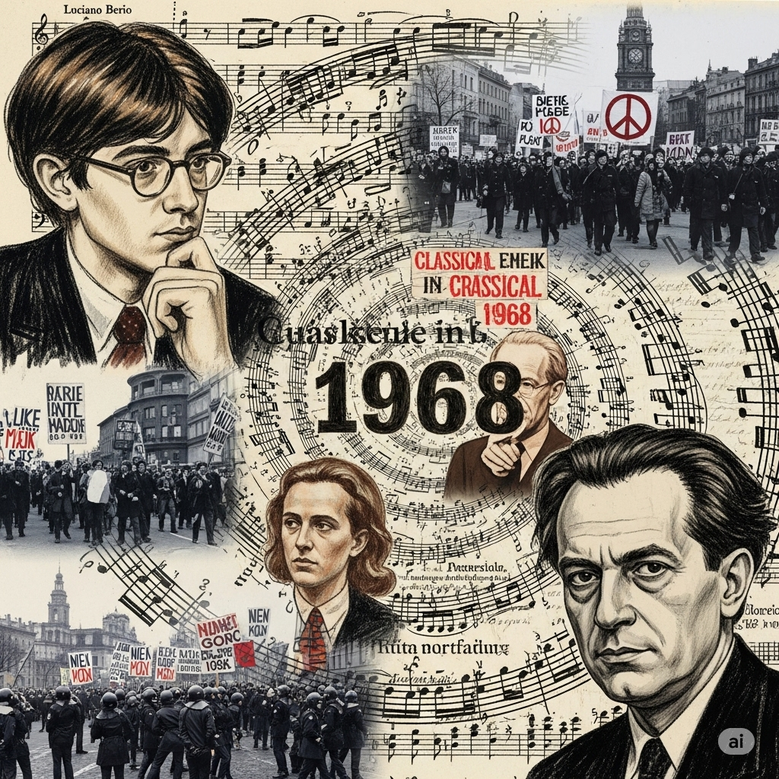1968: A Year of Revolution and Reflection in Classical Music
The year 1968 was a tumultuous period of global social and political upheaval, and the world of classical music was no exception. While popular music genres like rock and folk became the primary soundtrack for protest movements, classical composers were also grappling with the year's dramatic events, resulting in works that were both innovative and deeply reflective of the times. This period saw the premiere of significant compositions that challenged traditional forms and engaged directly with the political turmoil of the era.1

Premieres of Politically Charged Masterpieces
Two of the most enduring classical works to emerge from 1968 were Luciano Berio's "Sinfonia" and Karel Husa's "Music for Prague 1968."
Berio's "Sinfonia," which premiered on October 10, 1968, is a seminal work of musical postmodernism. Commissioned for the 125th anniversary of the New York Philharmonic, it is a complex collage of musical and literary quotations.2 The third movement is particularly famous for its dense layering of snippets from works by Mahler, Ravel, and Debussy, among others, alongside spoken texts from sources as varied as Samuel Beckett and student graffiti from the May 1968 protests in Paris.3 This movement captures the chaotic and fragmented spirit of the year. A significant part of "Sinfonia" is the movement "O King," a tribute to the recently assassinated Martin Luther King Jr.4
Karel Husa's "Music for Prague 1968" was a direct and powerful response to the Soviet-led Warsaw Pact invasion of Czechoslovakia, which crushed the "Prague Spring" reforms.5 Composed for symphonic band, the piece incorporates a 15th-century Hussite war song, "Ye Warriors of God and His Law," a potent symbol of Czech resistance.6 The work is filled with dramatic tension, using techniques like Morse code and the sound of bells to evoke the city's struggle for freedom.7 It has since become a staple of the wind ensemble repertoire, a poignant memorial to a pivotal moment in Cold War history.8
Prevailing Trends and Other Notable Events
Beyond these landmark premieres, 1968 saw a continuation of the experimental and avant-garde trends that had been developing throughout the 1960s. Composers continued to explore serialism, aleatoric (chance) music, and electronic music. The lines between different art forms also continued to blur, with composers collaborating with artists, writers, and choreographers on multimedia works.
The year also marked important moments for established composers and performers. For instance, Benjamin Britten dedicated his opera The Prodigal Son to Dmitri Shostakovich, who would reciprocate the dedication with his Fourteenth Symphony the following year, highlighting a continued creative dialogue across the Iron Curtain.9
While the "Summer of Love" had passed, its influence, along with a growing interest in Eastern philosophy and music, continued to subtly permeate Western culture, including classical music. This could be seen in the use of non-Western instruments and musical structures in some compositions.
In essence, classical music in 1968 was a vibrant and dynamic field, deeply engaged with the turbulent spirit of the age. It was a year of both bold experimentation and profound political commentary, producing works that continue to resonate with audiences today.
This performance of Prokofiev's "Classical Symphony" from 1968 provides a glimpse into the enduring popularity of earlier works during this innovative year.
A 1968 performance of Prokofiev's Classical Symphony